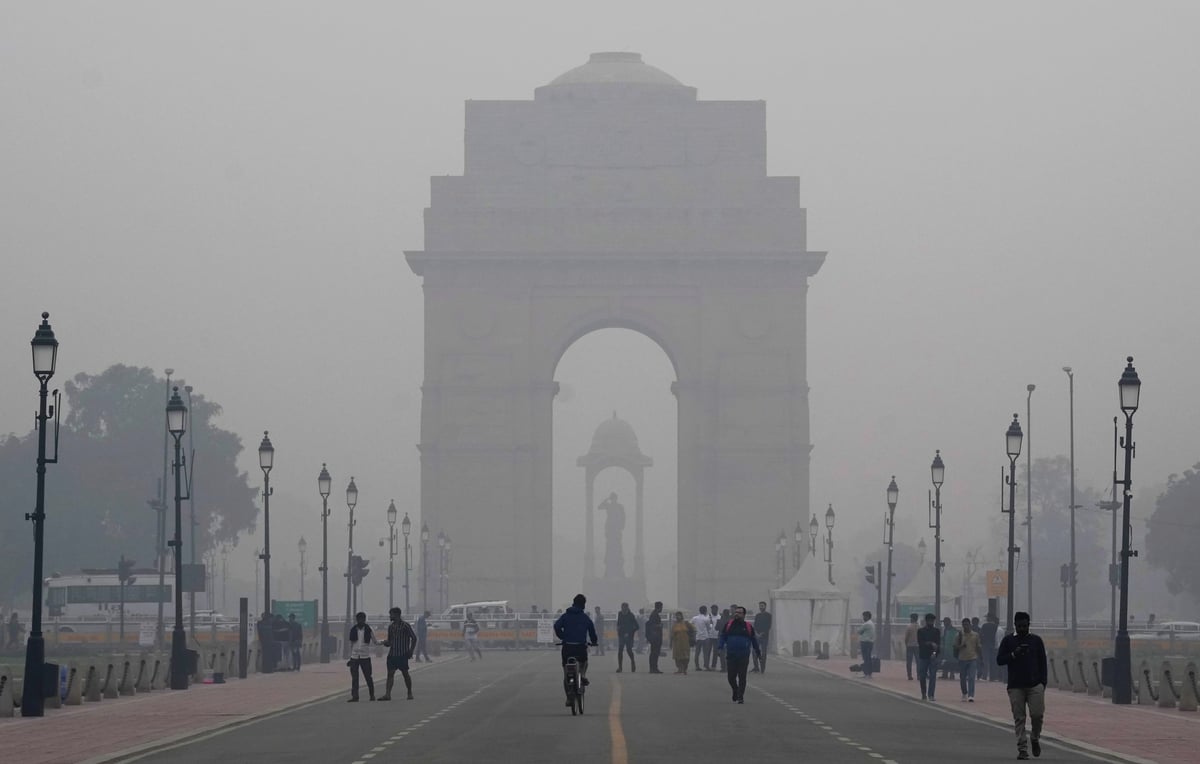Delhi Pollution: On Monday morning, the pollution level in Delhi-NCR was recorded seven to eight times more than the safe level set by the government. For several consecutive days, poisonous smog was visible in the atmosphere over these areas. On Sunday, strict restrictions were imposed in Delhi including a ban on the entry of polluting trucks. Along with adverse wind conditions, there was a rapid increase in incidents of stubble burning across North India, due to which the air quality is being recorded in the ‘very severe’ category for the second time. Meanwhile, Delhi Chief Minister Arvind Kejriwal has called a high-level meeting on Monday at 12:00 pm to discuss the city’s worsening air pollution crisis. Delhi’s Environment Minister Gopal Rai and officials of all concerned departments will attend this meeting.
This meeting is being held by CM Kejriwal at a time when the situation is worsening due to air pollution in Delhi. Delhi’s air remained severely polluted for the fifth consecutive day on Monday morning and the Air Quality Index (AQI) is still in the ‘severe’ category. AQI 488 has been recorded in the national capital. The most affected areas in Delhi include RK Puram (466), ITO (402), Patparganj (471), and New Moti Bagh (488). In view of the increasing air pollution levels in Delhi, the Delhi government has extended the closure of all schools up to class five till November 10. The Kejriwal government has said that there is no need to close schools up to classes 6-12, but they have the option of online classes.
Increasing number of respiratory and eye diseases increases concern
A suffocating blanket of toxic smog was seen in Delhi on Monday too. Doctors have expressed concern about the increasing number of respiratory and eye diseases among children and the elderly. Fine PM2.5 particles, which are capable of penetrating deep into the lungs, can cause health problems. In the last few days, the government’s safe limit of 60 micrograms per cubic meter has increased by seven to eight times at many places in Delhi-NCR. This is 80 to 100 times higher than the WHO safe limit of 5 micrograms per cubic meter. The Center has implemented the Graded Response Action Plan (GRAP) in Delhi and surrounding cities, where the air quality remains in the ‘severe plus’ category.
Which vehicles are not allowed to enter Delhi?
Talking about Graded Response Action Plan (GRAP), it is a set of anti-air pollution measures which has been established by the Central Pollution Control Board (CPCB). GRAP has four phases. Of these, stage IV is the most serious. Stage IV is activated when the air quality index (AQI) is above 450 or in the ‘Severe Plus’ category. Necessary steps are taken to deal with severe air pollution including GRAP prohibiting trucks carrying essential goods, providing essential services or other trucks running on LNG, CNG or electricity from entering Delhi. Only electric, CNG and BS-VI diesel light commercial vehicles (LCVs) are allowed entry from outside Delhi.
Not only this, all construction work and other related works in Delhi are banned for a few days. For example, public projects like roads, bridges and power lines are postponed. Delhi and Central governments may allow public, municipal and private offices to work from home with half of their employees. Delhi’s air quality is counted among the worst among the capitals of other countries. A report by the University of Chicago has found that air pollution reduces people’s life by about 12 years.

